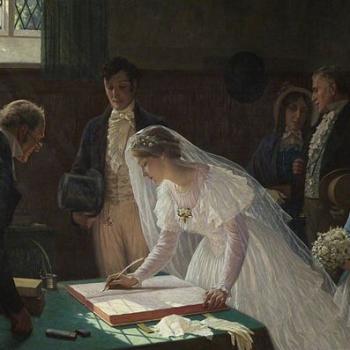A very interesting article and commentary has just appeared at America Magazine and I want to begin by thanking them for keeping me from making a fool of myself. For a while I have been thinking about writing about the LCWR crisis, and my mind kept circling around the “fact” that orders associated with the LCWR had a dearth of vocations, whereas communities associated with the CMSWR were “overflowing” with new vocations. Thankfully, I was never able to decide what this fact meant.
And this was a very good thing: the facts, it seems are wrong. In an article posted today at America, Mary Johnson and Patricia Wittberg look at the actual vocation data for women’s religious orders in the US. Their key conclusion is that neither the LCWR orders nor CMSWR orders are overwhelmed with vocations and that internally they are both showing a great deal of variation. Some of their data:
One of the most striking findings regarding new entrants is that almost equal numbers of women have been attracted to institutes in both conferences of women religious in the U.S. in recent years. As of 2009, L.C.W.R. institutes reported 73 candidates/postulants, 117 novices and 317 sisters in temporary vows/commitment. C.M.S.W.R. institutes reported 73 candidates/postulants, 158 novices and 304 sisters in temporary vows/commitment. (There are 150 nuns in formation in U.S. monasteries.)
A sizable proportion of L.C.W.R. and C.M.S.W.R. institutes have no one in formation at the present time (32 percent and 26 percent respectively). This, of course, does not preclude these institutes having new membership in the future.
The median number of entrants to L.C.W.R. institutes is one, which means that half of the responding L.C.W.R. institutes had no more than one woman in initial formation in 2009. The corresponding median number of entrants for C.M.S.W.R. institutes is four, which means that half of C.M.S.W.R. institutes had four or fewer in initial formation in 2009. Since there are far fewer C.M.S.W.R. member institutes than L.C.W.R. institutes, the key finding here is that only a very small number of institutes are attracting more than a handful of entrants.
The authors frame the vocations crisis in a very different fashion: the second author has presented evidence that fewer young Catholic women are practicing their faith. This, they feel, lies at the heart of the question of vocations to all religious communities:
Since a significant number of young adult Catholic women have fallen away from religious practice, religious institutes have the challenge of trying to recruit women who are also struggling with their deep ambivalence about the church. This is an issue that belongs to the entire church, not just to religious institutes. Given the tension regarding the church and young women, attention must be given to those places that hold the promise of new life. To that end, questions need to be posed: What will religious institutes have to do in order to build and sustain more multicultural communities and institutes that look like the youth and young adults of the church in this country?
Fr. James Martin provides thoughtful commentary on this new article; in particular, he points out how widespread the false assumptions about vocations have been in the recent discussion about the LCWR.
Having been spared embarrassment, I am still at a loss as to what to say about the LCWR crisis. But in light of the final comment, I am drawn back to a post I made earlier: by the decline in vocations and religious practice, what are women trying to say to the Church? Women’s ordination is clearly a sore spot: I know more than a few women who accept it and generally don’t talk about it (“religious submission of the will”) but are still find the arguments for the ban unconvincing. But this is about more than women’s ordination, I think, and I don’t want this discussion to get bogged down on this one question. I am more concerned by the broader issues: what is being said?












